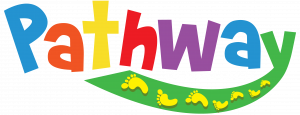Bright Futures Parent Handout: 5 and 6 Year Visits
View spanish version, share, or print this article.
ICD10
-
Z00.12 -
99383 -
99393
Here are some suggestions from Bright Futures experts that may be of value to your family.
How Your Family is Doing
-
Spend time with your child. Hug and praise him.
-
Help your child do things for himself.
-
Help your child deal with conflict.
-
If you are worried about your living or food situation, talk with us. Community agencies and programs such as SNAP can also provide information and assistance.
-
Don't smoke or use e-cigarettes. Keep your home and car smoke-free. Tobacco-free spaces keep children healthy.
-
Don't use alcohol or drugs. If you're worried about a family member's use, let us know, or reach out to local or online resources that can help.
Staying Healthy
-
Help your child brush his teeth twice a day
After breakfast
Before bed
-
Use a pea-sized amount of toothpaste with fluoride.
-
Help your child floss his teeth once a day.
-
Your child should visit the dentist at least twice a year.
-
Help your child be a healthy eater by
Providing healthy foods, such as vegetables, fruits, lean protein, and whole grains
Eating together as a family
Being a role model in what you eat
-
Buy fat-free milk and low-fat dairy foods. Encourage 2 to 3 servings each day.
-
Limit candy, soft drinks, juice, and sugary foods.
-
Make sure your child is active for 1 hour or more daily.
-
Don't put a TV in your child's bedroom.
-
Consider making a family media plan. It helps you make rules for media use and balance screen time with other activities, including exercise.
Family Rules and Routines
-
Family routines create a sense of safety and security for your child.
-
Teach your child what is right and what is wrong.
-
Give your child chores to do and expect them to be done.
-
Use discipline to teach, not to punish.
-
Help your child deal with anger. Be a role model.
-
Teach your child to walk away when she is angry and do something else to calm down, such as playing or reading.
Ready for School
-
Talk to your child about school.
-
Read books with your child about starting school.
-
Take your child to see the school and meet the teacher.
-
Help your child get ready to learn. Feed her a healthy breakfast and give her regular bedtimes so she gets at least 10 to 11 hours of sleep.
-
Make sure your child goes to a safe place after school.
-
If your child has disabilities or special health care needs, be active in the Individualized Education Program process.
Safety
-
Your child should always ride in the back seat (until at least 13 years of age) and use a forward-facing car safety seat or belt-positioning booster seat.
-
Teach your child how to safely cross the street and ride the school bus. Children are not ready to cross the street alone until 10 years or older.
-
Provide a properly fitting helmet and safety gear for riding scooters, biking, skating, in-line skating, skiing, snowboarding, and horseback riding.
-
Make sure your child learns to swim. Never let your child swim alone.
-
Use a hat, sun protection clothing, and sunscreen with SPF of 15 or higher on his exposed skin. Limit time outside when the sun is strongest (11:00 am–3:00 pm).
-
Teach your child about how to be safe with other adults.
No adult should ask a child to keep secrets from parents.
No adult should ask to see a child's private parts.
No adult should ask a child for help with the adult's own private parts.
-
Have working smoke and carbon monoxide alarms on every floor. Test them every month and change the batteries every year. Make a family escape plan in case of fire in your home.
-
If it is necessary to keep a gun in your home, store it unloaded and locked with the ammunition locked separately from the gun.
-
Ask if there are guns in homes where your child plays. If so, make sure they are stored safely.
The information contained in this handout should not be used as a substitute for the medical care and advice of your pediatrician. There may be variations in treatment that your pediatrician may recommend based on individual facts and circumstances. Original handout included as part of the Bright Futures Tool and Resource Kit, 2nd Edition.
Listing of resources does not imply an endorsement by the American Academy of Pediatrics (AAP). The AAP is not responsible for the content of external resources. Information was current at the time of publication.
The American Academy of Pediatrics (AAP) does not review or endorse any modifications made to this handout and in no event shall the AAP be liable for any such changes.
© 2019 American Academy of Pediatrics. All rights reserved.

